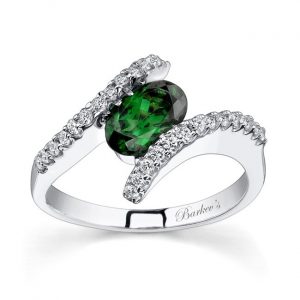
Shopping for gemstone jewelry can be a daunting task when you see terms like “natural” and “lab-created” thrown into the mix. If you don’t know exactly what it is you are buying, you may not be satisfied when you find out what it is that you actually purchased.
Lab Created Stones
Some stones, like moissanite and cubic zirconia, are manufactured inside a lab to imitate the look of other gemstones. While these gemstones may have the same look and color of the gemstones they imitate, their chemical and physical characteristics are not the same.
Some lab created (or synthetic) stones such as rubies, sapphires, and emeralds, however, do actually possess the same chemical and physical makeup as the natural stones they imitate and they are not imitations. However, because they are more readily available, lab created stones tend to be more affordable alternatives to the natural variety. They also tend to have more bold colors and fewer impurities as impurities do not exist in a lab setting.
Mining Process
While natural stones are present within the earth’s surface and are mined from it, lab created rubies, diamonds, and emeralds, can be created in a lab setting using the same materials. The only real difference in how these stones are made is the heat source used. When natural stones are mined, the heat source is natural based on the climate in which they are found. In a lab, the same temperature can be used to create the stones but it is controlled in a lab environment rather than in naturally occurring climates.
Price
Because natural stones are mined, there is a more limited quantity of them. Lab created stones, however, are virtually in endless supply as long as the labs that create them remain in business. The dangers behind mining natural stones are also evident and incur the cost of the manual labor required to procure them. Lab settings are a much safer, and perhaps more ecologically friendly, place to create these stones. In addition, lab created stones don’t contain inclusions that natural stones create due to gases present in the environment. Theoretically, then, lab created stones can be replicated where natural stones are entirely unique. The bottom line is the price of lab created stones compared to natural stones directly correlates to the difficulty in mining versus lab creating the stones and the unique inclusions a natural stone possesses that lab created stones do not.
So, if you want a stone that is more vivid in color and has no inclusions while possessing the identical chemical properties as a similar natural stone, you will save more money in the long run.

